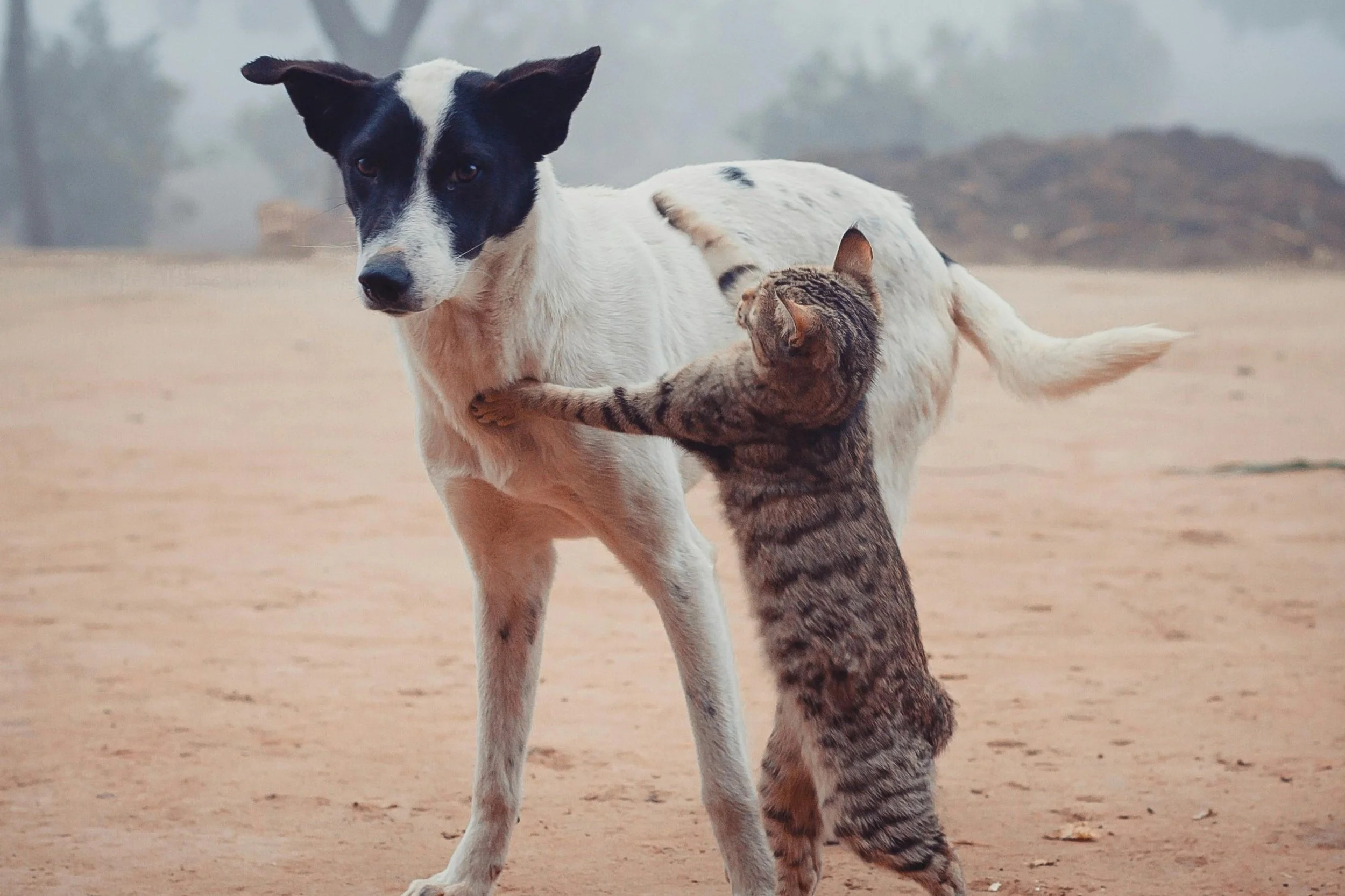How to Introduce a Cat to Your Dog or Puppy: A Step-by-Step Guide
Bringing a new cat home to meet your dog (or introducing your puppy to a resident cat) can feel a little nerve-wracking — and for good reason. While dogs and cats can get along just fine, a lot depends on how you introduce them.
A slow, thoughtful introduction sets the tone for a peaceful relationship between your pets — whether that means coexisting calmly or becoming cuddle buddies down the line.
Here’s a step-by-step guide on how to safely and successfully introduce a cat to your dog or puppy.
Can Cats and Dogs Get Along?
Yes — many cats and dogs can live together happily. In fact, some become incredibly close. But success doesn’t usually happen overnight. It depends on:
Your dog’s temperament and energy level
Your cat’s personality and comfort around other animals
Their past experiences (especially if either has had negative run-ins before)
How you manage the introduction
Even if your pets seem curious or laid-back, it’s important to go slow and give them time to adjust.
Before the First Meeting: Set Up for Success
Understand Your Dog's Behavior
Not all dogs are cat-friendly right away. Some have a strong prey drive and may want to chase or bark. Others may be fearful or overly excited. Puppies are usually more adaptable, but their energy can still be overwhelming for a cat.
If your dog has never met a cat before, start by managing your expectations — calm introductions take time.
Create a Safe Space for Your Cat
Your cat should have a quiet area in the house where the dog can’t follow. This room should have:
Food and water
A litter box
Hiding spots
Vertical space like shelves or a cat tree
Having a space that feels safe gives your cat more confidence and helps prevent fear-based behavior.
Step-by-Step: How to Introduce a Cat and Dog
Step 1: Let Them Smell Each Other
Before they meet face to face, get them used to each other’s scent. Swap bedding or rub a soft cloth on one and leave it near the other. You can also feed them on opposite sides of a closed door so they associate the other animal’s smell with something positive.
Step 2: Controlled Visual Introduction
Once they’re comfortable with each other’s scent, let them see each other through a baby gate or a cracked door. Keep these short at first, and watch how they respond.
If your dog lunges, barks, or fixates, calmly redirect them with a treat or toy.
If your cat hisses, growls, or hides, back off and try again later.
Don’t push it — these early sessions are about calm exposure, not forcing interaction.
Step 3: On-Leash Meeting
When both pets seem relaxed, allow a brief meeting with your dog on a leash and your cat free to move. Keep it short and positive.
Ask your dog to sit or stay. Reward calm behavior.
Let your cat decide how close they want to get. Don’t force them to interact.
If things go smoothly, gradually increase the length of these sessions over time.
Step 4: Supervised Time Together
After several successful leash meetings, try short periods of off-leash time — but only if your dog stays calm and your cat has easy escape routes.
Supervise every second and end the session if either pet seems overwhelmed or agitated. Some dogs may need more time on leash before they’re ready to be trusted around a cat.
What to Avoid
Don’t rush the process — some introductions take days or weeks
Don’t leave them unsupervised until you’re confident they’re safe together
Don’t scold or punish either pet for growling, barking, or hissing — instead, end the session calmly and try again later
Signs Things Are Going Well
Your dog responds to cues and isn’t overly fixated on the cat
Your cat moves around normally, eats, and isn’t hiding all the time
They sniff each other calmly, or even ignore each other completely (which is okay!)
When to Get Help
If your dog is showing signs of aggression (like growling, lunging, or intense staring), or if your cat seems constantly stressed, it may be time to bring in a certified trainer or behaviorist. Some dogs just aren't suited to living with cats — and that's okay, too.
Final Thoughts
Introducing a dog to a cat (or vice versa) doesn’t have to be stressful — but it does take time, patience, and a little strategy. Go slow, keep things positive, and always let your pets set the pace. The goal isn’t instant friendship — it’s building trust, one step at a time.
And remember: just because it starts with a few barks or hisses doesn’t mean it won’t end in a peaceful household.
